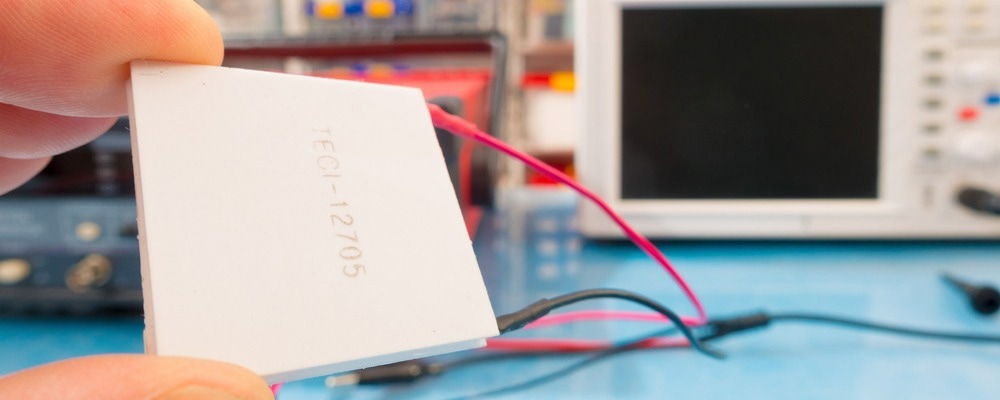 By Surbhi JainReviewed by Susha Cheriyedath, M.Sc.Jul 26 2022
By Surbhi JainReviewed by Susha Cheriyedath, M.Sc.Jul 26 2022In a review recently published in the journal ACS Applied Energy Materials, researchers discussed the quasi-2D carrier transport for thermoelectric performance in KMgBi.

Study: Quasi-2D Carrier Transport in KMgBi for Promising Thermoelectric Performance. Image Credit: luchschenF/Shutterstock.com
Background
A focused effort is needed to increase renewable energy supplies in order to meet the world's rising energy demand. Thermoelectrics has been a significant area of study that turns such waste heat into power. Ternary half-Heusler alloys (HHAs) have shown promise in TE applications.
There has been a lot of work done recently to find novel HHAs with potential TE characteristics. The family of ANiSn (A = Zr, Ti, or Hf)-related compounds with the highest reported ZT values is one of the best HHAs discovered thus far. The TE figure of merit in pure HHAs turns out to be quite low. In order to enhance the TE performance of an ideal crystal, it is crucial to modify the governing parameters through doping or pressure.
The semiclassical Boltzmann transport equation can be theoretically used to investigate the impact of doping in perfect crystals. Several density functional theory (DFT)-based investigations have covered KMgBi. How to experimentally crystallize at room temperature in the tetragonal phase has been observed. Within the generalized gradient approximation (GGA), it is projected that this tetragonal phase of KMgBi will exhibit a band gap of 363 meV, which closes when spin-orbit coupling (SOC) effects are taken into account. KMgBi has never been investigated from a thermoelectric standpoint, despite numerous reports to the contrary.
About the Study
In this study, the authors demonstrated how KMgBi developed a significant amount of anharmonicity, which resulted in a low lattice thermal conductivity. At a temperature of about 600 K, this resulted in a high TE figure of merit, ZT = 2.21 with p-type. A thorough examination of electron and phonon dispersion revealed that KMgBi had an intriguing quasi-2D structure. The authors also described how to further improve the TE performance of KMgBi through alloy engineering using the flat degenerate valence band and strong spin-orbit coupling.
The team talked about KMgBi, a significant ternary half-Heusler molecule. They first confirmed that KMgBi exhibited a quasi-2D character. The unusual optical, electrical, and thermal properties of the quasi-2D materials made them ideal candidates for temperature control, electronics, energy conversion, and other applications. The different characteristics of the proposed layered crystal structures, like KMgBi, were examined.
The researchers provided a thorough analysis that demonstrated that KMgBi was a good option for TE applications, whose efficiency could be further increased by the development of appropriate alloys. The findings were based on the HSE06+GW scheme's highly accurate band gap/order calculations that take the SOC impact into account.
The explicit assessment of thermoelectric properties was also conducted. The lattice thermal conductivity (κL) and carrier relaxation time (τ), which were necessary for a trustworthy estimation of the TE figure of merit, were carefully calculated. A thorough analysis of how optical phonon modes affected ZT and the lattice's thermal conductivity was provided. The prospect of enhancing KMgBi's TE performance by alloy engineering was further investigated because of the intriguing flat valence band characteristic that resulted from the quasi-2D nature and potent SOC effects.
Observations
The band gap increased from 0.83 eV for pure KMgBi to 0.9 eV at the HSE06 level and from 0.22 eV for pure KMgBi to 0.29 eV at the HSE06+SOC level with 12.5% As alloying at Bi sites. A straight band gap of 0.39 eV was seen at the PBE level for 12.5 percent Li at K sites; however, this gap closed when SOC was taken into consideration. When compared to the ZT value for n-type conduction of 0.76, a remarkably high ZT value of 2.21 was achieved for p-type conduction.
By replacing Li at K and As at Bi sites, the band gap was increased while the band curvature was little impacted, which enhanced the TE performance. With 50% As alloying, a 10%–11% improvement was observed in ZT. A quasi-2D nature of this material was shown from both the electron and phonon band structures, as well as comprehensive simulations of the thermoelectric, phonon, and electrical structures.
The valence band edges' flat band characteristic was preserved by the addition of SOC. Such flat bands were very helpful for potential electron transfer. Additionally, KMgBi exhibited superior thermal conductivity and excellent thermal transfer. Because of its advantageous electrical and thermal transport, KMgBi was a strong option with a TE figure of merit ZT as high as 2.21.
Li was discovered to help widen the band gap when alloyed with potassium because it was the lighter element. Arsenic doping at Bi sites also diminished the spin-orbit coupling, which raised the band gap once more.
Conclusions
In conclusion, this study theoretically examined the thermoelectric properties of the experimentally produced KMgBi. The hybrid HSE06+GW technique was used to conduct a more precise band gap and band order prediction than most other ab initio computations. Different substitutional alloying in KMgBi was investigated for additional TE efficiency improvement. Keeping the flat band characteristic of the valence band borders helped to improve the band gap.
The authors anticipate a 10–11% rise in ZT for KMgBi with the suggested alloying. They mentioned that because of the extraordinarily low L and high ZT values, KMgBi is a very interesting TE candidate for further experimental investigation.
More from AZoM: What is Glow Discharge Optical Emission Spectrometry
Disclaimer: The views expressed here are those of the author expressed in their private capacity and do not necessarily represent the views of AZoM.com Limited T/A AZoNetwork the owner and operator of this website. This disclaimer forms part of the Terms and conditions of use of this website.
Source:
Vikram, Sahni, B., Jain, A., et al. Quasi-2D Carrier Transport in KMgBi for Promising Thermoelectric Performance. ACS Applied Energy Materials (2022). https://pubs.acs.org/doi/10.1021/acsaem.2c01685